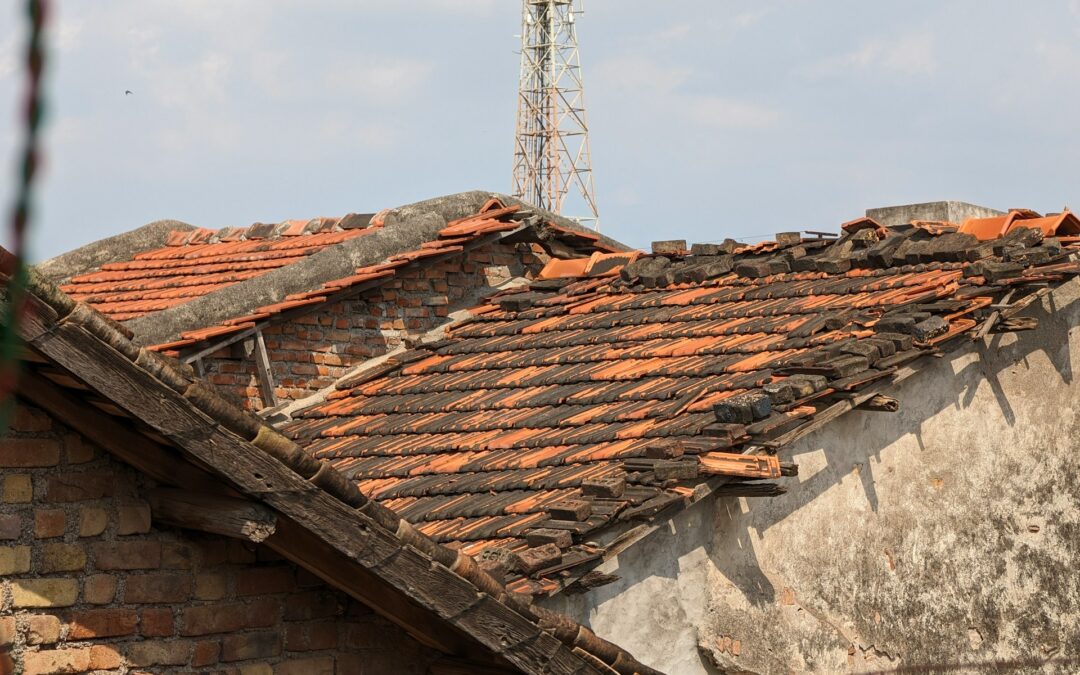Hail storms are among the most destructive weather events impacting a home, especially the roof. Even a brief storm can damage your roof, bringing punctures, cracks, and compromised structural integrity. Timely roof repair after a hail storm fixes visible issues and safeguards your home. With Bacon Roofing, a trusted local expert, you can keep your home well-protected through professional repairs and care.
Initial Inspection: Identifying Hail Damage
Visible Signs of Roof Damage
The first step in roof repair after a hail storm is a thorough inspection. One of the most obvious indications of hail damage is dented or cracked shingles. Hailstones can create small depressions or even break the shingles, leading to water penetration if left unaddressed.
Granule loss on shingles also leads to weak protection against UV rays and other elements. With dislodged granules, typically seen as bald spots on shingles, your roof can further deteriorate.
Lastly, hail can cause physical damage to the gutters, causing them to sag, bend, or become detached from the roofline. Blocked gutters due to hail debris can also lead to water backup, posing further risks to your roof and home.
Hidden Roof Damage
While visible signs of hail damage are important to identify, it’s equally important to investigate issues that may not be immediately evident.
One significant concern is the development of leaks, which can manifest as water stains on the ceilings or walls of a home. These stains often indicate water penetrating through the roof, potentially leading to mold growth, wood rot, and further structural damage.
Moreover, the impact of hail may compromise the roof’s structural integrity. Over time, weakened roof support beams and rafters can become less reliable, increasing the risk of sagging or even collapse under severe conditions.
Filing an Insurance Claim
Documenting the Damage
Once you’ve identified the damage, the next step in roof repair after a hail storm is to file an insurance claim. Take clear, detailed photographs of any affected areas of your roof, including close-ups of individual shingles showing granule loss or cracks, as well as wider shots that illustrate the overall state of your roof.
In addition to photographs, keep all receipts and records related to temporary repairs. If you have costs incurred for tarps, emergency repairs, or any service calls to assess the damage, documents will help substantiate your claim and provide an accurate account of the expenses.
Working With an Insurance Adjuster
After documenting the damage, immediately schedule a professional inspection of your roof. A roofing contractor can give a comprehensive assessment of the extent of the damage that your insurance adjuster will need. When choosing a contractor, look for reputable companies with experience with hail damage claims and know about insurance processes.
Once you complete the inspection, request a detailed report from the contractor outlining their findings. This report should include specifics about the damage, recommended repairs, and an estimate of the repair costs. The contractor’s professional opinion can significantly influence the insurance adjuster’s assessment of your claim, ensuring you receive appropriate compensation.
Hiring a Professional Roofing Contractor
Why Choose a Local Expert?
The right contractor is a must for roof repair after a hail storm. It’s best to choose local experts as they understand local weather patterns and roofing needs. Moreover, a local contractor can respond more quickly to your needs, minimizing the time your home is exposed to potential damage.
What To Look for in a Contractor
When selecting a roofing contractor, look for proper licensing and insurance to protect your home and yourself from liability. Also, look for contractors with solid reputations in the community, as indicated by customer reviews and testimonials.
Repair or Replace? Making the Right Decision
Factors To Consider
A roof repair after a hail storm is usually the first line of defense, especially when it’s more cost-effective for many homeowners. However, a complete replacement can be necessary if you consider the following:
- Age of the Roof: Most roofs last up to 50 years, depending on the materials. If your roof is nearing the end of its expected life, a replacement might be more advantageous than investing in repairs that may only provide a temporary solution.
- The Extent of the Damage: If the hail has caused significant damage, such as large dents, missing shingles, or compromised structural integrity, a replacement may be more appropriate.
- Long-Term Cost Benefits: While initial repair expenses may be lower, frequent repairs on an aging roof can accumulate, ultimately leading to higher costs than a new roof installation. A new roof can also be more energy efficient, increasing home value and lowering insurance premiums.
Wrapping Up
Acting quickly after a hail storm is the only way to save your home from further damage. Inspect your roof first and then file an insurance claim; hire a professional roofing contractor to restore it to its full strength. Never wait until it’s too late. Contact Bacon Roofing for a professional inspection and high-quality roof repair after a hail storm!

